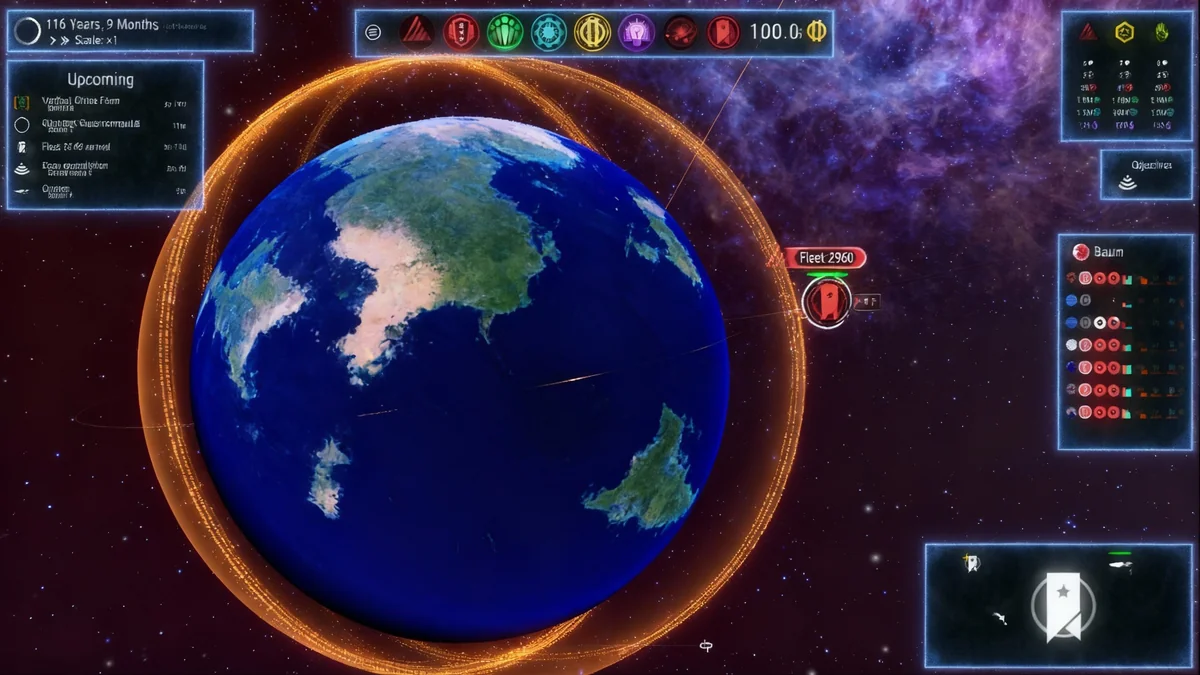A new psychological horror game titled Toxoplasma places players in the role of a lone scientist on a derelict space station. The game focuses on survival and the blurring line between reality and hallucination as the protagonist works to complete a dangerous bio-weapon while possibly being infected by it.
Key Takeaways
- Toxoplasma is a new survival horror game set on an isolated space research station.
- Players assume the role of the last surviving scientist tasked with completing a bio-weapon.
- The central conflict involves managing sanity and distinguishing between reality and virus-induced hallucinations.
- The narrative revolves around uncovering a conspiracy that led to Earth's downfall.
The Premise of Toxoplasma
In Toxoplasma, players awaken on a decaying space station in orbit around a dying Earth. The backstory establishes that humanity has descended into widespread violence and chaos. The player character is a scientist, seemingly the last person alive on the station, who must continue work on a highly dangerous project.
The project is the Toxoplasma virus, a bio-weapon designed to induce terrifying hallucinations in its victims. These visions manifest as demonic entities, leading to the host's eventual death. The primary mission is to complete the development of this weapon, creating an immediate moral and psychological conflict for the player.
Setting the Scene: A Dying World
The game's setting is critical to its atmosphere. With Earth in a state of collapse below, the space station becomes a tomb-like environment, amplifying the sense of isolation. This backdrop provides a compelling reason for the creation of a desperate, last-resort weapon like the Toxoplasma virus.
Gameplay Mechanics and Psychological Horror
Toxoplasma is designed as a claustrophobic survival experience. The gameplay centers on exploration, resource management, and maintaining the protagonist's sanity. Players must navigate the dark, empty corridors of the research facility, where environmental cues may or may not be real.
A core mechanic is the protagonist's potential infection. As the game progresses, players will begin to experience symptoms, such as seeing fleeting shadows or hearing voices in empty rooms. The central challenge is to determine whether these events are genuine threats or simply products of the virus, isolation, or decaying mental stability.
"I wake up on this empty station and see things I know should not be there. I don’t know if they’re real, or hallucinations from the isolation — or if I’ve infected myself."
Surviving the Unknown
Survival involves more than just avoiding physical threats. Players will need to analyze biological samples and research notes to understand the nature of the virus and its effects. This scientific approach is integrated into the gameplay, requiring careful observation and deduction.
The environment itself is a character in the game. Flickering lights, malfunctioning systems, and eerie silence contribute to a persistent feeling of dread. The game aims to create tension not through constant action but through uncertainty and the anticipation of what might be lurking just out of sight.
The Science of Fear
The game's title, Toxoplasma, is derived from Toxoplasma gondii, a real-world parasite known to alter the behavior of its hosts. While the game takes creative liberties, its premise is rooted in the biological concept of an organism influencing its host's perception and actions, adding a layer of plausibility to its sci-fi horror narrative.
Uncovering a Hidden Conspiracy
Beyond the immediate struggle for survival, Toxoplasma features a deep narrative centered on a hidden conspiracy. As players explore the station, they will uncover logs, notes, and environmental clues that piece together the story behind the apocalyptic project.
The plot tasks players with discovering who commissioned the bio-weapon and for what purpose. This investigation forces the player to confront their own character's involvement and complicity in the events that led to humanity's destruction. The story promises to explore themes of moral decay and the justifications people make for committing terrible acts.
Moral Choices and Final Decisions
The game's conclusion will likely depend on the player's actions and discoveries. The central question posed is whether humanity is worth saving. As the last person with knowledge of the virus, the player holds the power to either complete the weapon or find another path.
This decision-making process is designed to test the player's morality, especially as their perception of reality becomes increasingly unreliable. The line between right and wrong blurs when you can no longer trust your own senses.
Key Features of the Game
Toxoplasma blends several elements to create its unique horror experience. Based on the initial information, players can expect the following features:
- Psychological Storytelling: A narrative that focuses on the protagonist's mental and emotional state.
- Survival Tension: Players must manage resources and sanity to stay alive in a hostile environment.
- Exploration and Investigation: The story unfolds through exploring the decaying space station and analyzing evidence.
- Hallucinatory Gameplay: A core mechanic where players must constantly question what is real.
- Atmospheric Setting: The game uses its isolated, deep-space environment to build a sense of claustrophobia and dread.
Toxoplasma aims to deliver a tense, narrative-driven horror experience where the greatest enemy may be the player's own mind. The game challenges players to survive not just a haunted space station, but a descent into madness itself.





